Early Verdict
It's no diamond in the rough, but this ECS AM4 board delivers decent value--if overclocking and expandability aren't crucial.
Pros
- +
Average performance, thermals, and efficiency bring value at no-frills price
Cons
- -
Lacks polish on critical software components
- -
Funky packaging and minimalist bundle
- -
Limited fan, RGB headers
- -
Only two DIMM slots
Why you can trust Tom's Hardware
Features & Layout
We’ve been flying pretty close to the sun lately, reviewing some awesome X370, B350, and X399 motherboards. High-end IO, spiffy lighting, and high overall build quality have kept our enthusiast blood vessels pumping.
But now it’s time to visit the other end of the solar system.
Does AMD’s essential A320 chipset belong in a system near you, or do higher-end mainstream and enthusiast boards make more sense? Can the ECS brand make a first impression that will sway this reviewer from the fancy RGB of more widely available boards stateside? Should anyone put a tortoise on their motherboard boxes? Let's investigate.
At first glance, the ECS A320AM4-M3 is a pleasant deviation from what you might expect given the pricing. Abandoning reds, blues, and greens, ECS uses purple to provide a subtle-yet-distinctive color throughout the outer packaging. The choice of a tortoise and a serpent accompanying the Durathon 2 branding is also an interesting departure from dragons, claws, and race cars, even if the tortoise gives our enthusiast eye some serious pause.
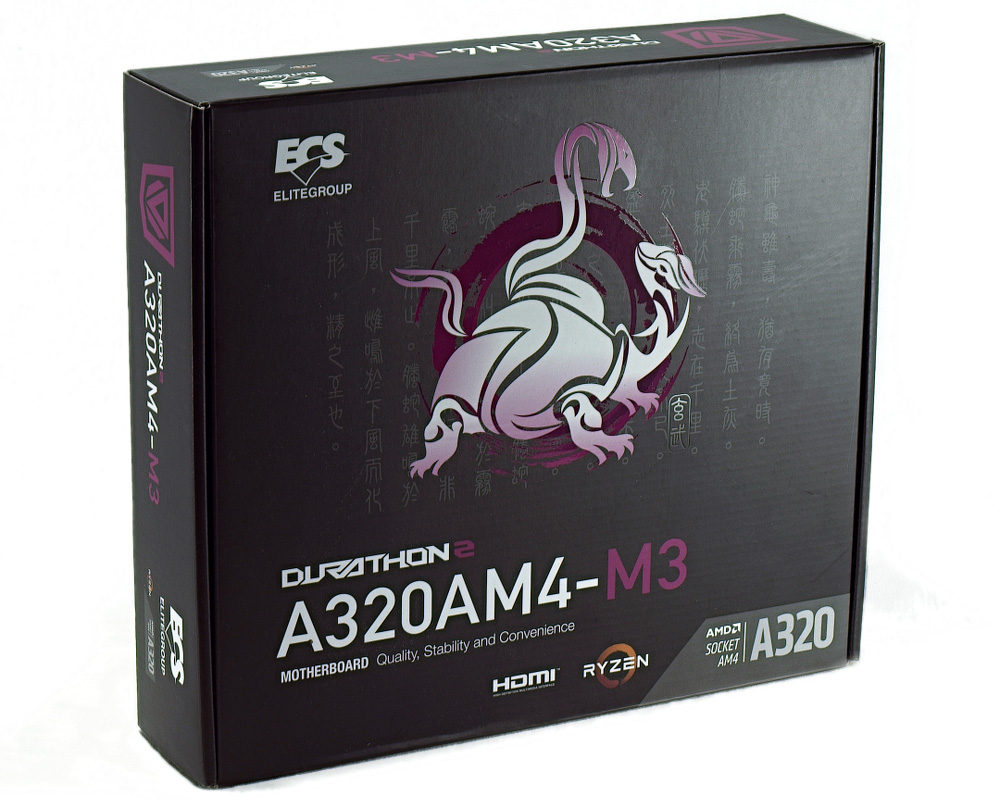
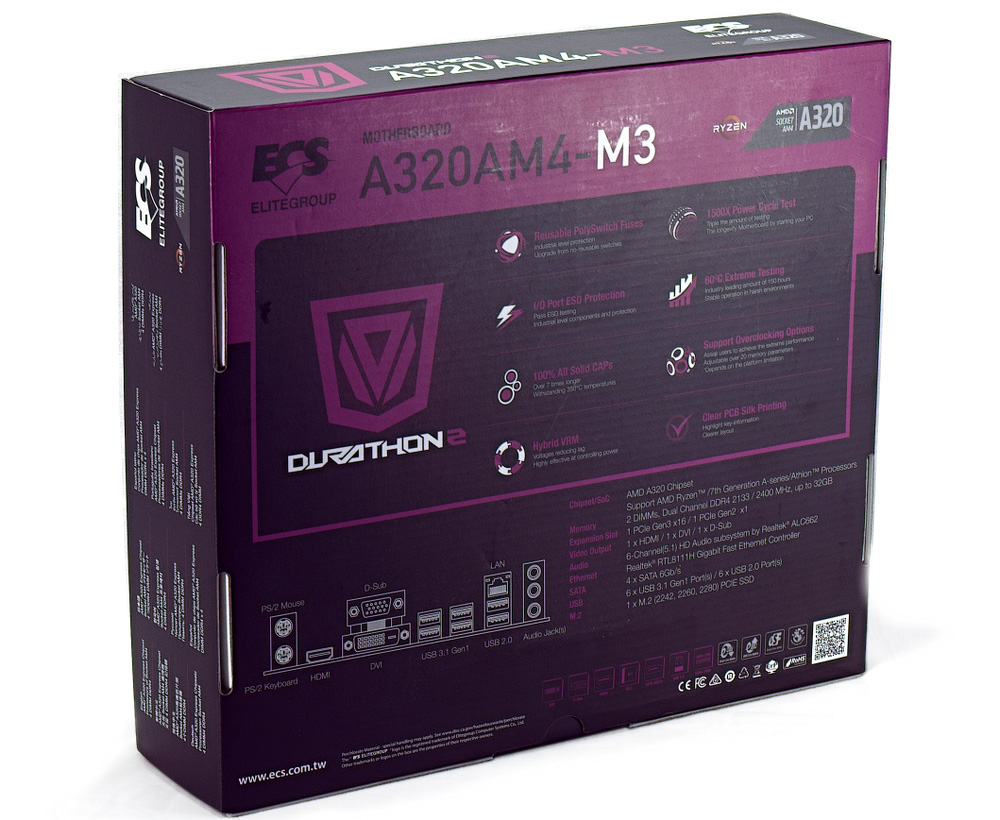
Flipping over to the back, the purple begins to consume a bit more real estate, but the smaller fonts and minimal logos help keep clutter to a minimum while still providing adequate descriptions. We also enjoy the Decepticon-esque logo on the box and wish that it were a bit more prominent on other aspects of the product.
Contents of the box, on the other hand, are just as we would expect from a lower-end board. Two SATA cables, a driver CD, and a manual...that’s it. This is one of the skimpiest loadouts for a board we have seen in quite some time. Granted, some of us never use the included discs, and most of us rarely require cables, but there are likely some first-time builders who will rely on the motherboard to provide the cables for their hard disks. Also, the included guide seems a bit thin, so we recommend downloading ECS’ manual from the company website.


Though we had mixed feelings about the packaging and contents, the board design itself placed our expectations on happier ground. The back panel includes VGA, DVI, and HDMI 1.4 ports for builders who want to utilize an APU, which would fit well with this target market. Two PS/2, four USB 3.0, and two USB 2.0 ports are available, a modest set of universal attachments. The ECS A320AM4-M3 is also equipped with a single gigabit Ethernet port and three ports of analog audio, on par with some of the Mini-ITX boards we’ve tested.
Get Tom's Hardware's best news and in-depth reviews, straight to your inbox.

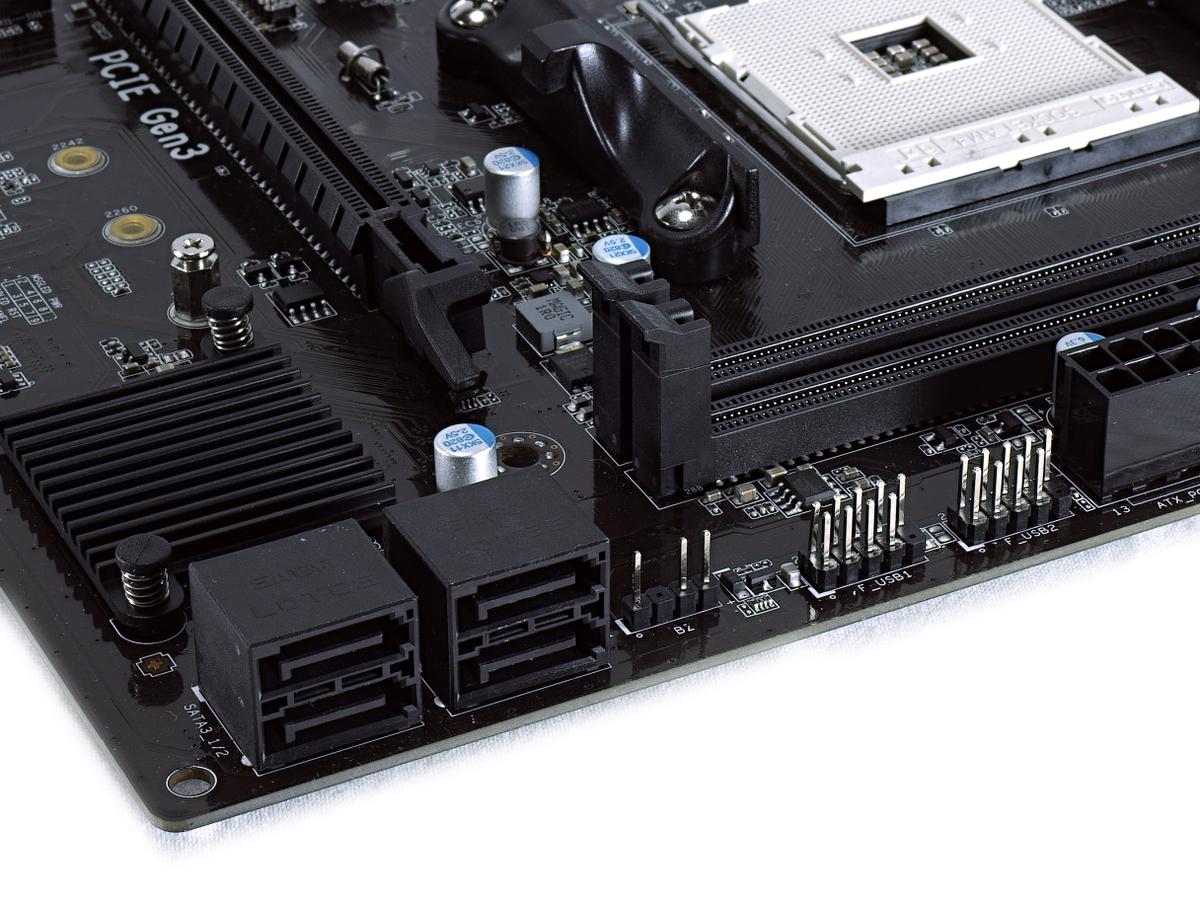
This MicroATX board sports a single PCIe x16 Gen3 slot for the assumed graphics card (unless you're using an APU) and a small PCIe x1 Gen2 port for use with a myriad of options from COM cards to capture cards. Placed between the two slots, the included M.2 port is routed out for PCIe Gen3 x4 NVMe on Ryzen chips and a reduced lane count and speed for Athlon-branded processors.
Hopping over to the right side of the board, four angled SATA3 ports are provided, which is nice despite the reduced quantity compared to B350. A major downside to this product, though, is the choice of only two DIMM slots for memory modules. Though no overclocking is officially supported with this product, there is no upside for preventing users from using four sticks of RAM.


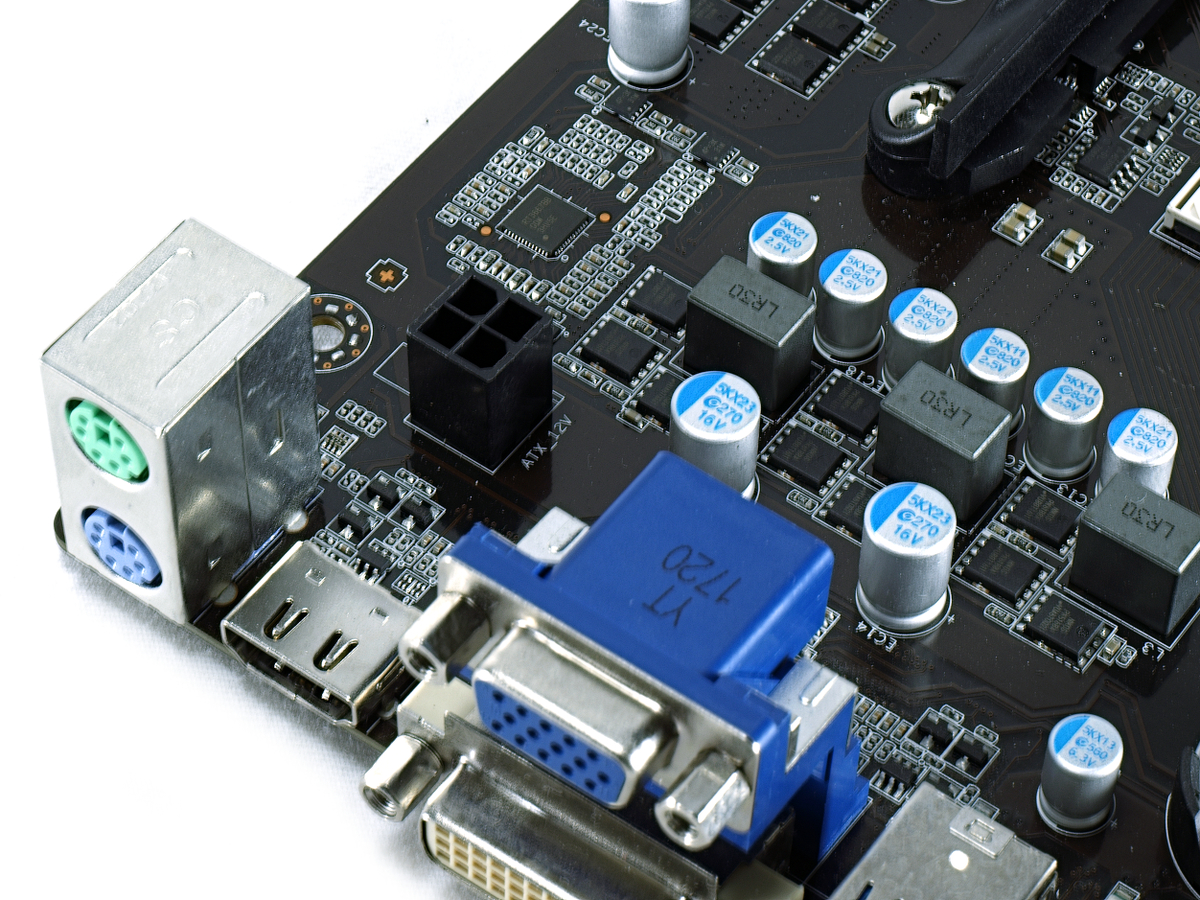
Going top-side, we note a rare thing: no heatsinks on the voltage regulators. This 3+2 phase design gives us our first unmodified opportunity to measure regulator temperatures with a Ryzen CPU at full load. (However, without sufficient airflow, we could be sniffing burnt silicon in our test bench before long.) Speaking of regulators, this board has a single four-pin 12V connector for additional juice for our CPU, adequate for non-overclocking tasks.



As for headers, two four-pin fan headers are available at the top and bottom of the board, along with a single RGB LED header for a likely AMD Wraith cooler or similar product. Front panel, COM, USB 3.0, and front-panel-audio headers reside on the lower edge of the board, and the silk-screening to the northeast of the front-panel header is clearly labeled with polarities for pins 1 and 2. Additional USB 2.0 headers are located directly above the SATA3 ports and below the 24-pin ATX header.
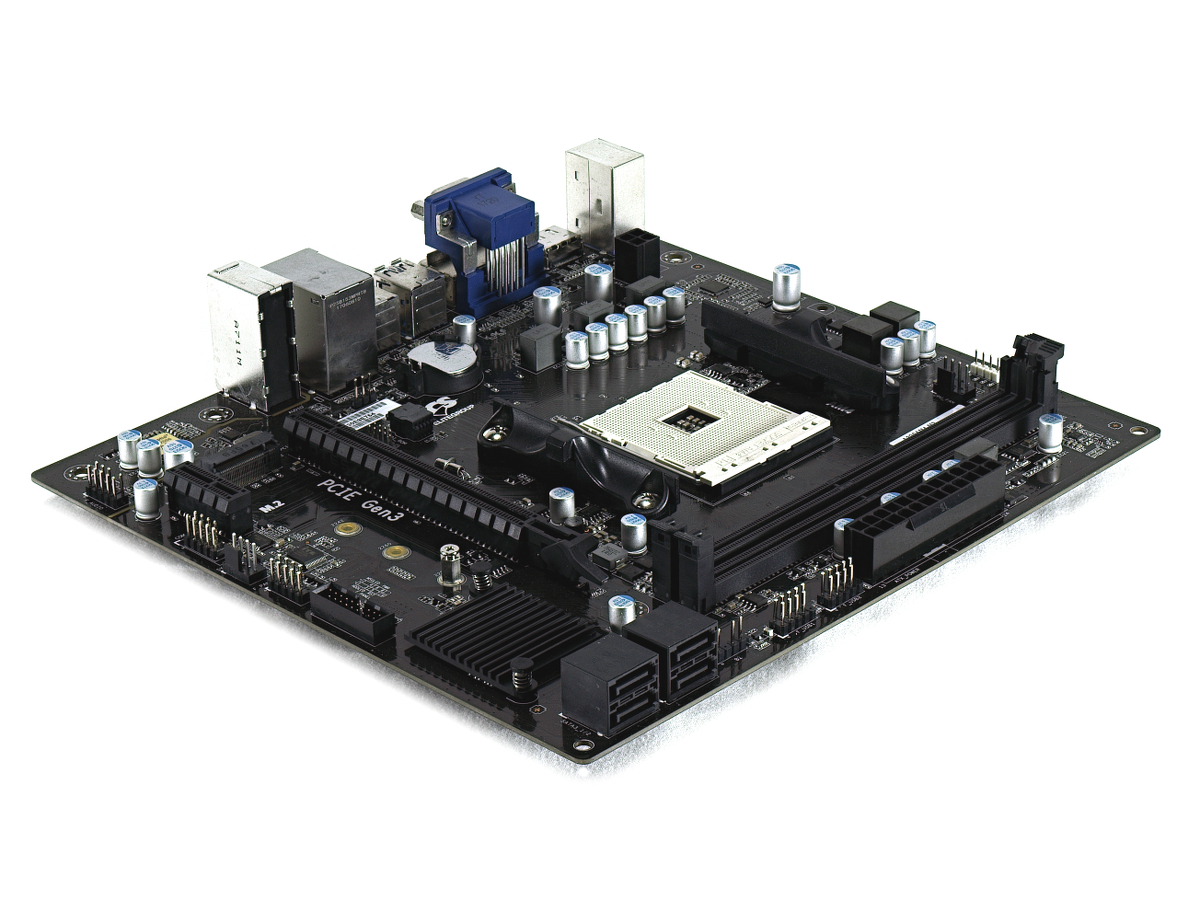

Overall, the product provides the bare minimum for even the lowest of Ryzen processors. Comparing against some of the spec material for A320, USB 3.1 Gen2 is listed nowhere on the marketing material, which is an unflattering omission. Given the lack of heatsinks on the Vregs and any sort of embellishment, the ECS M3 board will likely live its life inside of a closed case lacking any sunlight (much like this reviewer in his office during the work day).
MORE: Best Motherboards
MORE: How To Choose A Motherboard
MORE: All Motherboard Content
-
ET3D Looks good with a dGPU, but that 2400 RAM speed is bound to hurt a Ryzen APU, which is the more logical bed fellow. Is there any RAM you have which is high speed on this board?Reply -
Olle P "... there is no upside for preventing users from using four sticks of RAM."I beg to differ. Upsides:Reply
* Reduced motherboard cost.
* More space available for CPU cooler and other components.
Another "pro":
* Wide range of video connectors for use with an APU.
(How many of the other tested motherboards have HDMI, DVI and VGA ports?)
A comparison between those motherboards using a 2200G and internal graphics only, paired with a set of cheap RAM (instead of 1700X, high end RAM and discrete graphics), would put this motherboard in its correct element.
That said I'd rather spend a few bucks more to get the B350 chipset with full overclocking capabilities... -
daglesj Reply20751674 said:Minecraft? I'm sure it can deliver ample e-sport gaming and internet cafe usage.
Well a 8 year old Dell Optiplex costing $80 from Ebay would do fine for a Internet Cafe. ;)
-
carssuckjeepsrule Obviously. But you need to test with the same components for standardization and clean test results. Multiple variables render the test invalid. Also, high end components raise the bottle neck beyond the reach of the component you're testing, otherwise you don't know which component is affecting speed.Reply
